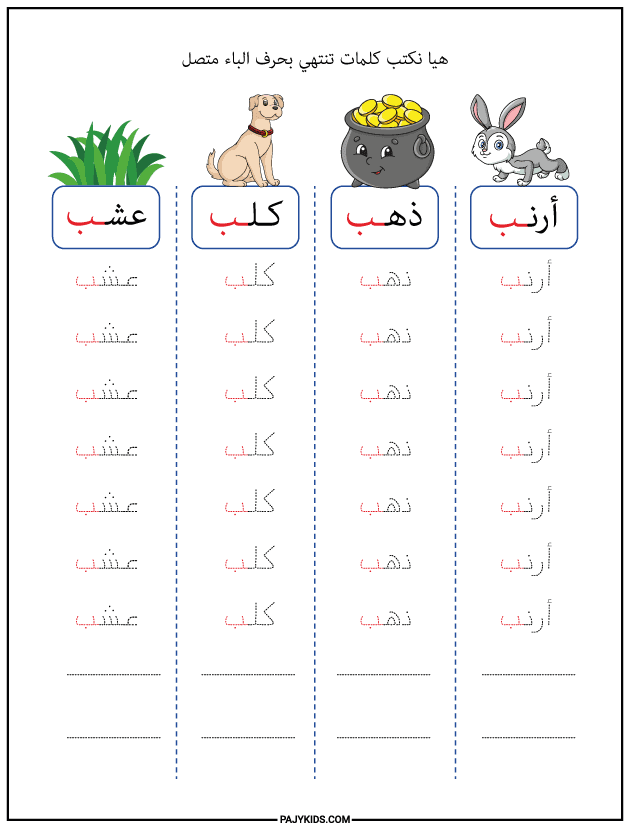Learning the Arabic ABCs alphabet is a foundational step for young learners beginning their language journey. One of the key letters, the letter Bāʼ (ب), is often introduced through visual aids and engaging worksheets that demonstrate how it appears at the beginning, middle, and end of words. These Arabic abcs worksheets provide essential practice that reinforces recognition, writing, and pronunciation of the letter in all its forms. For early learners, especially in kindergarten or first grade, structured exposure to letters through hands-on materials can make a significant difference in literacy development.
Understanding the Shapes of Letter Bāʼ (ب)
In Arabic, letters change shape depending on their position in the word. Letter Bāʼ (ب) is a great example for introducing this concept. In the arabic abcs, students learn that ب appears differently when it is at the beginning (بـ), middle (ـبـ), or end (ـب). By using visual worksheets, students begin to internalize this concept through repetition and guided practice.
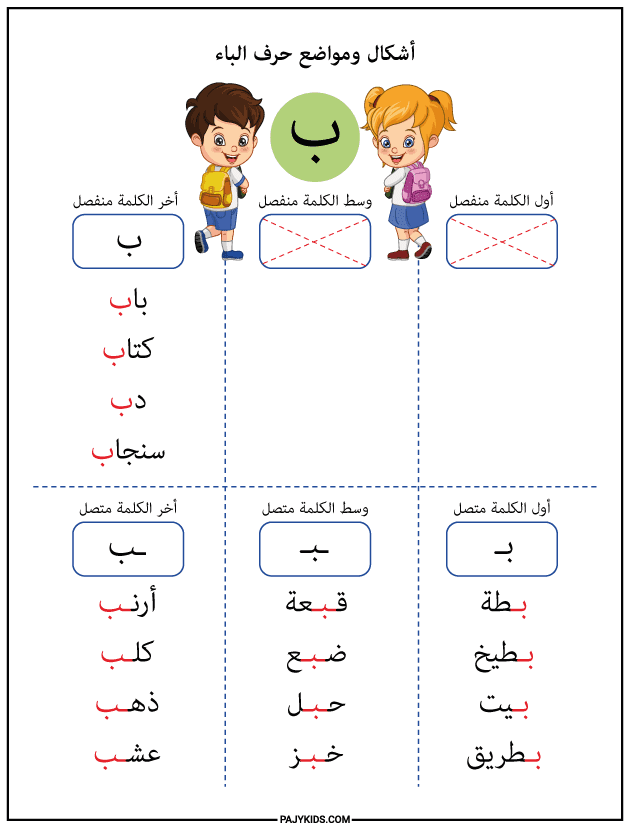
Benefits of Using Visual Worksheets in Early Education
Children respond well to colors, patterns, and clear visuals. Arabic abcs worksheets focused on the letter Bāʼ make learning interactive and engaging. Students trace the letter, color images, and connect the sound with real-life words. These activities help develop fine motor skills alongside letter recognition, making them ideal for early learners.
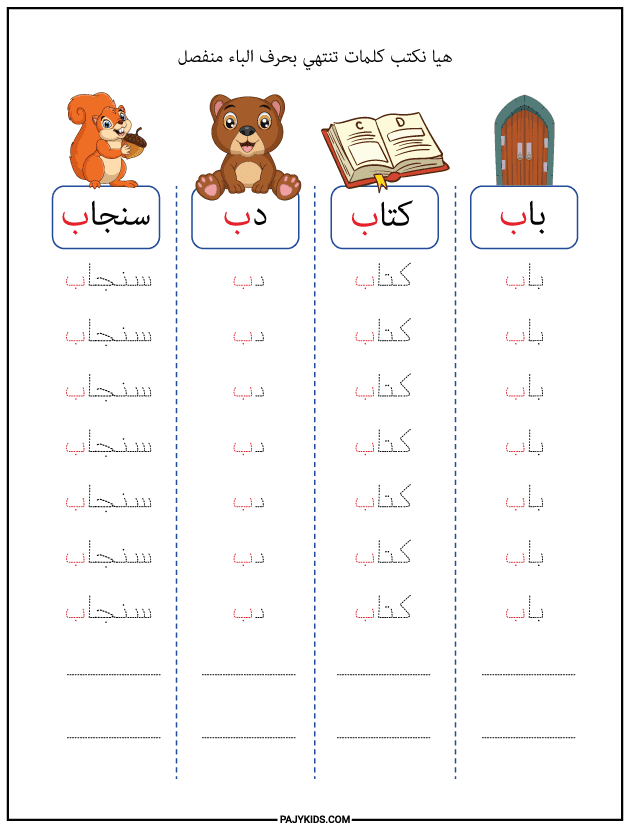
Building Vocabulary Through the Letter Bāʼ
A creative way to reinforce learning is by teaching vocabulary that contains the letter Bāʼ. For example, words like باب (door), بطة (duck), and كتاب (book) are perfect for illustrating how ب looks in different positions. Integrating these words into arabic abcs worksheets helps students connect phonics to meaning, building their vocabulary organically.
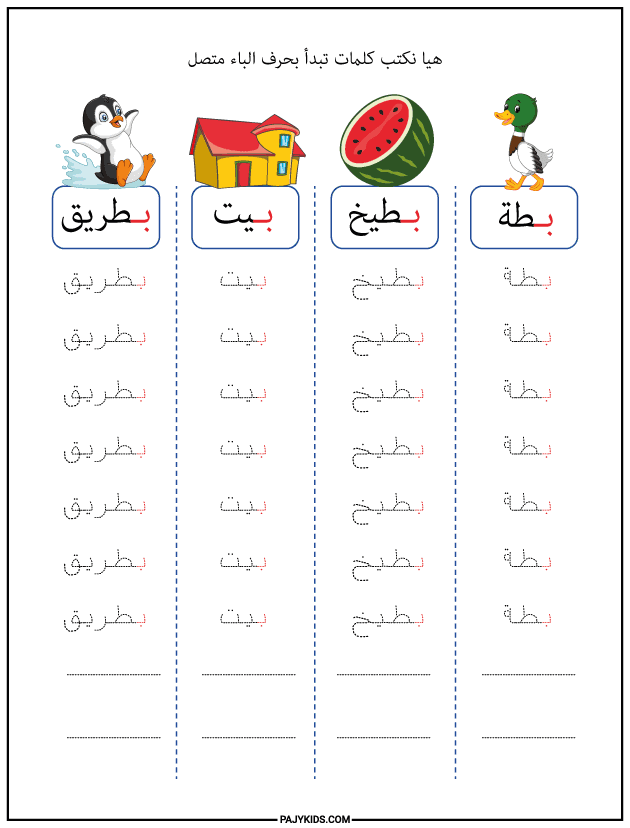
Phonetic Awareness and Pronunciation Practice
Phonetic awareness is crucial when learning a new script. The sound /b/ of the letter Bāʼ is easy for beginners, which makes it a confidence-building letter in the arabic abcs sequence. Worksheets that pair the letter with audio or teacher-led pronunciation help reinforce correct articulation and listening skills.
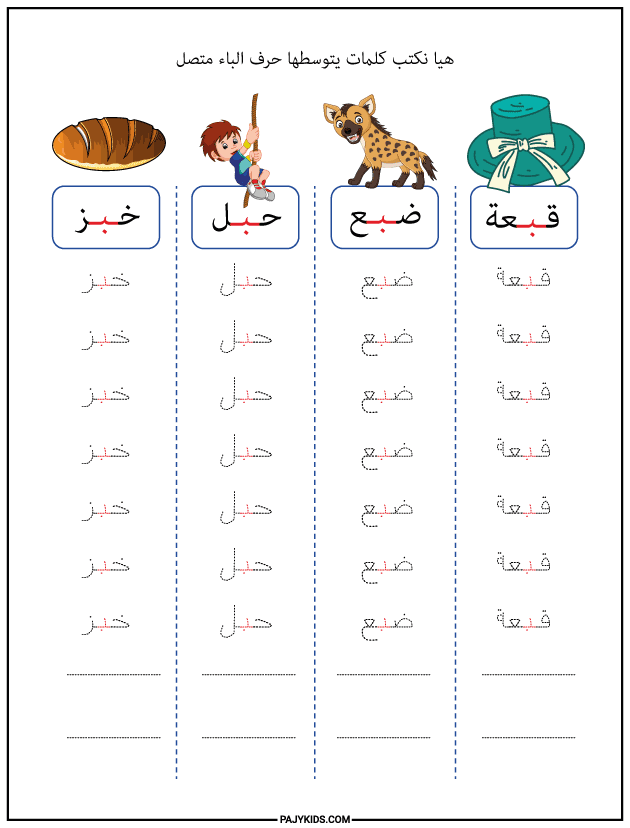
Final Form of Ba’ – Unconnected
Some words in Arabic end with Ba’ in its unconnected form, such as سنجاب , باب , or دب. These variations are important for learners to distinguish. Letter Ba’ Shapes activities help highlight these exceptions, encouraging learners to focus on details and deepen their understanding of Arabic writing rules.
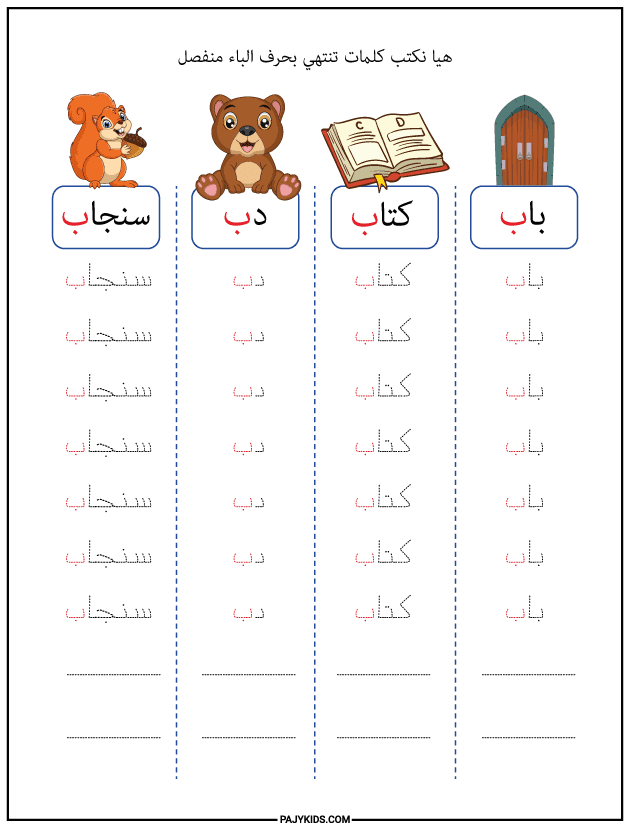
Final Form of Ba’ – Connected to the Previous Letter
In many cases, Ba’ appears at the end of a word but remains connected to the preceding letter, like in عشب، ذهب، أرنب. Children learn to differentiate this form through repetition and guided writing tasks. Using Letter Ba’ Shapes worksheets, students reinforce their ability to identify and correctly write Ba’ in its connected final form—an essential skill for fluent Arabic writing.
